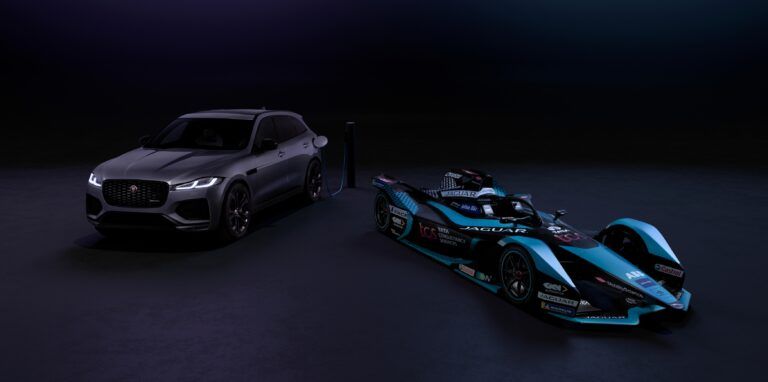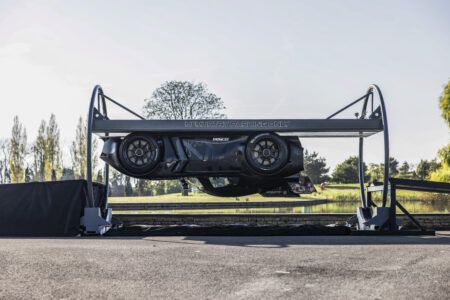In preparation for each round of the ABB FIA Formula E World championship, the Jaguar TCS Racing team has revealed that it creates a highly detailed model of every city circuit right down to drainage covers.
The London leg of this season’s Formula E calendar is taking place on 30-31 July, and the model Jaguar TCS is using also reflects the changes made for this season to the curvature of the double chicane between turns 10 and 13. The models are used in the state-of-the-art driver-in-the-loop simulator to develop the energy strategies for the races.
Knowing exactly when to use power during a race, and when to make the best use of energy recovery through regenerative braking is essential to getting the best performance from the Jaguar I-TYPE 5 Formula E race car. Efficiency wins races.
These race-winning strategies ensure that the drivers always press the accelerator – and lift off – at the optimal time, enabling them to conserve as much energy as possible.
Jaguar TCS Racing drivers Mitch Evans and Sam Bird judge lap after lap where the optimal braking point is for a corner, but just as importantly the best place to lift off the accelerator, enabling them to maximize regen and not waste energy using the friction brakes. This capability ensures that every joule of energy sent to power the I-TYPE 5’s motor – and returned to charge the battery during regenerative braking – is accounted for and used as efficiently as possible.
Learning from these strategies has direct real-world customer benefits through enhancing efficiency and reducing emissions for Jaguar’s plug-in electric hybrids (PHEVs) and mild-hybrids (MHEVs).
Software learnings from this process helped in the development of the Predictive Energy Optimisation function for the Jaguar F-PACE P400e and E-PACE P300e PHEV models. Entering a destination into the Pivi Pro infotainment system’s navigation gives PEO an overview of your journey (out to a maximum of 650km) which it splits into 100-meter segments for analysis.
Taking in a wealth of GPS map data including the types of roads – and average speeds on them, together with gradients – PEO makes an informed decision on how best the powertrain should be used at each stage: prioritizing the electric motor in urban areas to deliver zero tailpipe emissions driving, for example, or the efficient Ingenium petrol engine on motorways. This intelligent, predictive control of the two power sources can improve energy efficiency in real-world driving by up to 10 percent.
The system also ensures that drivers have at least six kilometers of EV range in reserve, ready for deployment in the final stage of a journey and enabling EV owners to arrive at their destination silently and with zero tailpipe emissions.
In addition, the Eco Coach feature – found in the Jaguar XE, XF, E-PACE and F-PACE MHEVs – uses intelligent algorithms to help customers develop a smoother, more efficient driving style by reading the road ahead and prompting them when to lift off, maximizing the benefits of regenerative braking.
On the road, Eco Coach uses the vehicle’s GPS location and data held in the cloud to anticipate the most likely route that the vehicle will take. Together with map data including gradients, road curvature and speed limits, the technology can look ahead for up to 2.5km – the so-called electronic horizon – to understand upcoming road features such as corners, junctions and roundabouts, lower speed limits and downhill slopes – all elements that would likely result in the driver backing off the accelerator pedal.
Updated every 10 meters, this intelligent picture of the road ahead is sent to the powertrain control module to determine the optimal point for the driver to lift off, enabling as much deceleration as possible to be done by regenerative braking instead of the friction brakes.
For the racetrack, the team back at base in the Ops Room are integral to the team’s success on track. Despite being away from the track, the Ops Room assists the team. The team sends data from the track to the Ops Room back at base, the Ops Room look and the data collected and makes conclusions that can help the team deliver a better lap in qualifying or strategy during the race.
James Barclay, Jaguar TCS Racing team Principal, said: “The difference between winning and losing can be down to less than one percentage point of energy consumption per lap – every marginal gain we can make to efficiency makes a difference. That’s why we model each circuit – and the Jaguar I-TYPE’s performance on it – to such a fine level of detail so that we develop the optimal energy strategy for every Formula E race.”





